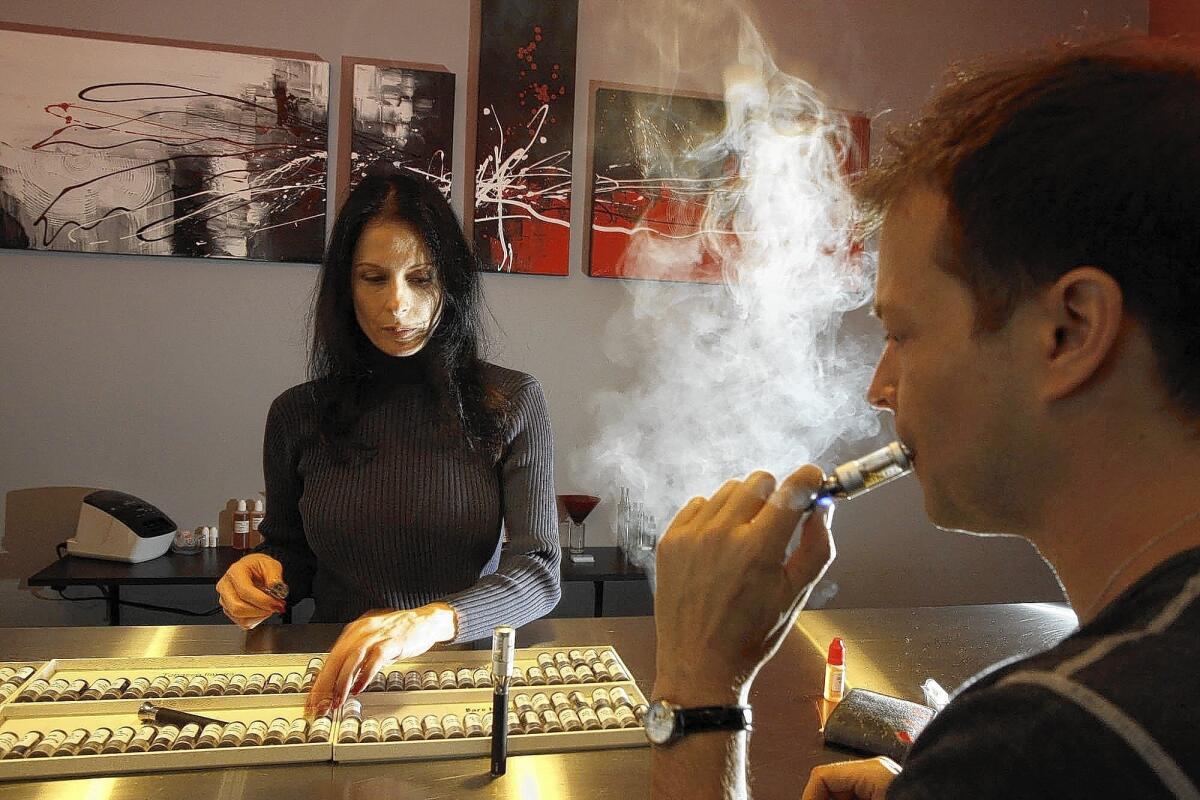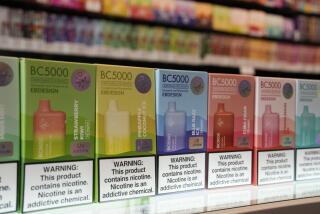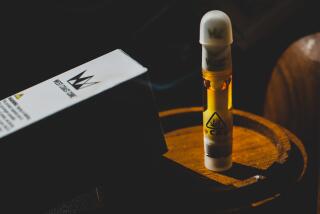Editorial: Banning flavored vapes may not stop a deadly respiratory outbreak, but it can cut teen use

- Share via
The number of e-cigarette users, many of them teenagers, who have been stricken by a mysterious and acute lung illness has more than doubled around the country in just the last week. More than 450 people have been hospitalized with serious respiratory distress and six people have died, including a 55-year-old man in Los Angeles County. Public health officials still don’t know what it is causing the ailment.
That’s the bad news. The silver lining is that this mystery illness has lit a fire under the Food and Drug Administration, which had been moving at a glacial pace in deciding whether and how to regulate electronic cigarettes, even as their popularity exploded among teenagers. Last year, the annual National Youth Tobacco Survey reported a 78% increase in vaping among high school students. The growth this year is expected to be equally high.
The turnaround began when people, many of them relatively young and otherwise healthy, started showing up at hospitals and clinics with the kind of symptoms you’d see in a 50-year smoker or someone who had been exposed to a toxic chemical agent.
On Wednesday, the day after the sixth death was reported, President Trump, flanked by the heads of the FDA and the Department of Health and Human Services, announced that his administration is planning to remove flavored electronic cigarettes from the market because “people are dying.”
There’s no evidence at the moment that the addition of bubble gum, cotton candy and other tasty flavorings to the e-cigarette liquid is responsible for this deadly lung disease that has cropped up in 33 states. Maybe it’s unrelated; maybe it’s a factor in, or even the cause of, the outbreak. Diacetyl, a chemical used to flavor microwave popcorn, has been found to cause an irreversible lung disease with symptoms similar to those of the mysterious illness, and has been used in some liquid nicotine.
At this point, however, the evidence is pointing elsewhere. Investigators are looking at whether the use of vitamin E oil in the after-market modification of e-cigarette pods by people vaping THC might be the culprit. Inhaling oil is extremely damaging to the lungs. To be safe, public health officials are cautioning people against vaping anything until they know for sure.
But even if flavored nicotine isn’t the villain of this particular epidemic, it’s still doing considerable harm by attracting kids to these products, and then offering something other than the harsh and unappetizing taste of straight tobacco to keep them coming back. The appeal of such flavorings to kids is why the FDA prohibited the makers of traditional cigarettes from using flavors other than menthol in 2009. (It is moving to nix menthol now, too.) And if you want to keep kids away from vaping and whatever it is that’s putting people in the hospital, making electronic-cigarettes less appealing is a strategy that studies indicate could work. Nearly 80% of teens who reported vaping said they tried flavors first.
While it’s too bad that it took a serious disease to mobilize the FDA into taking steps that public health officials and organizations like the American Lung Association and the Campaign for Tobacco-Free Kids have been urging for years, we welcome this action, assuming Trump follows through. Former FDA Commissioner Scott Gottlieb seemed concerned about young vapers but not enough to ban flavors. He was moving instead to limit the sales of e-cigarettes at convenience stores and other retail outlets to make them harder for teens to get.
By contrast, Alex Azar, secretary of HHS, the FDA’s parent agency, said on Wednesday in no uncertain terms that flavored vaping products would be gone soon and that rules would be released in a matter of weeks. Further, he warned that, “if we find that children are being attracted to tobacco-flavored e-cigarettes, if we find that manufacturers are marketing the tobacco-flavored e-cigarettes to children, or placing them in settings where they get them, we will take enforcement action there also.”
We hope this move does not discourage state and local governments from moving forward with their own crackdowns on flavored tobacco products, such as those being considered by Los Angeles County and Culver City. For one thing, the FDA’s ban does not include flavored cigarillos and smokeless tobacco; for another, we’ve seen enough reversals from this president not to put all our faith in one announcement on an otherwise slow news day.
More to Read
A cure for the common opinion
Get thought-provoking perspectives with our weekly newsletter.
You may occasionally receive promotional content from the Los Angeles Times.










